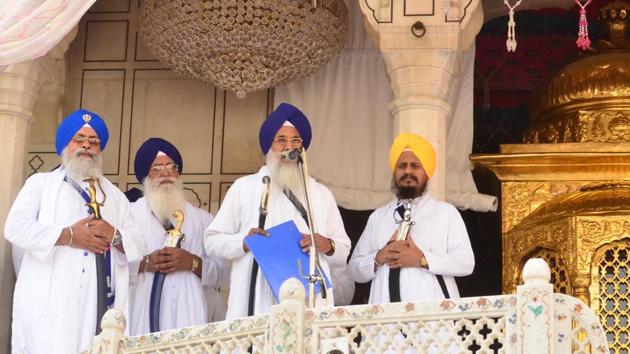HT Explainer | Know the meaning and history of excommunication in Sikhism
Excommunication is a tradition prevalent since the days of the tenth Sikh master, Guru Gobind Singh, not written down yet its procedure is passed on from one generation of the Sikh clergy to the next.
Excommunication of former Akali minister Sucha Singh Langah, who was booked in a rape case last week, from the Sikh panth (religion) on Thursday by the clergy once again brought Akal Takht, the highest temporal seat of Sikhs, into prominence. Also under the spotlight is the concept of excommunication.

What does excommunication (from the Sikh panth) mean?
Excommunication, as the word goes, means expelling someone from the socio-religious order of the Sikhs as a larger community. The five head priests led by the Akal Takht jathedar pronounce such an order.
Who is excommunicated?
As per the tradition, a Sikh is excommunicated for committing ‘bajar kuraihat’ (unpardonable offence) that covers four major offences — shaving off hair, keeping illicit relations, killing a daughter, and for demeaning Guru Granth Sahib or the ten gurus and keeping faith outside the religion. There are some minor offences that entail minor punishment (tankhah).
What’s the procedure?
Excommunication is a tradition prevalent since the days of the tenth Sikh master, Guru Gobind Singh, not written down yet its procedure is passed on from one generation of the Sikh clergy to the next. Sikh scholar Pirthipal Singh Kapur explains: “Those who accept a set doctrine set by the Gurus come under the ambit of Sikhism, are called Sikhs, and any Sikh who defies it is liable for punishment, which is pronounced by the Sikh clergy.” In recent times, there has been a system of giving hearing to the accused before the pronouncement, by being summoned before the head priests. In Langah’s case, though, he was not given a hearing as the FIR and the video “evidence” were available. In the olden days, Akal Takht used to act unilaterally. Now, the Takht jathedar works in consensus with other four head priests as an authority of the Sikh panth. The decision taken by them is considered final and binding on the panth.
Once excommunicated, can someone return to the Sikh fold?
As Kapur explained, there’s a system of pardon in every religion, and thus in Sikhism too. For anyone excommunicated, there are provisions of coming back to the Akal Takht, present oneself before the clergy and express repentance to be considered for pardon. There have been instances of pardon.
Who in the past have been excommunicated?
It goes back to the era of Maharaja Ranjit Singh in the early 19th century. He was summoned to the Akal Takht by the then jathedar Akali Phoola Singh in a case of adultery and he ordered thrashing of the emperor. After the sangat (community gathering) stood up for him, the thrashing was withdrawn. Giani Zail Singh as President of India and Buta Singh as Union home minister were excommunicated over Operation Bluestar un 1984, in which major damage was caused to Akal Takht. Both sought and were granted pardon later. Former Akal Takht jathedar Giani Darshan Singh was excommunicated from the panth on January 2010 for delivering a lecture at a New York gurdwara allegedly demeaning the Gurus. He never sought pardon and now lives in Canada.
Has the Akal Takht pronouncement ever been challenged?
The latest example is when Gurmeet Ram Rahim Singh, the head of Sirsa-based Dera Sacha Sauda who is now in jail for rape, was given pardon by the Akal Takht in 2015. That was related to the 2007 incident of his dressing up as the tenth Sikh guru, considered blasphemous by Sikhs, after which the clergy punished him by asking Sikhs to sever ties with him. But the 2015 pardon was seen as a political move backed by the Shiromani Akali Dal (SAD) that controls the Shiromani Gurdwara Parbandhak Committee (SGPC), which further appoints jathedars of three of the five Sikh Takhts. Under community pressure, the pardon was withdrawn later. But the action put the Takht under critical scrutiny.




